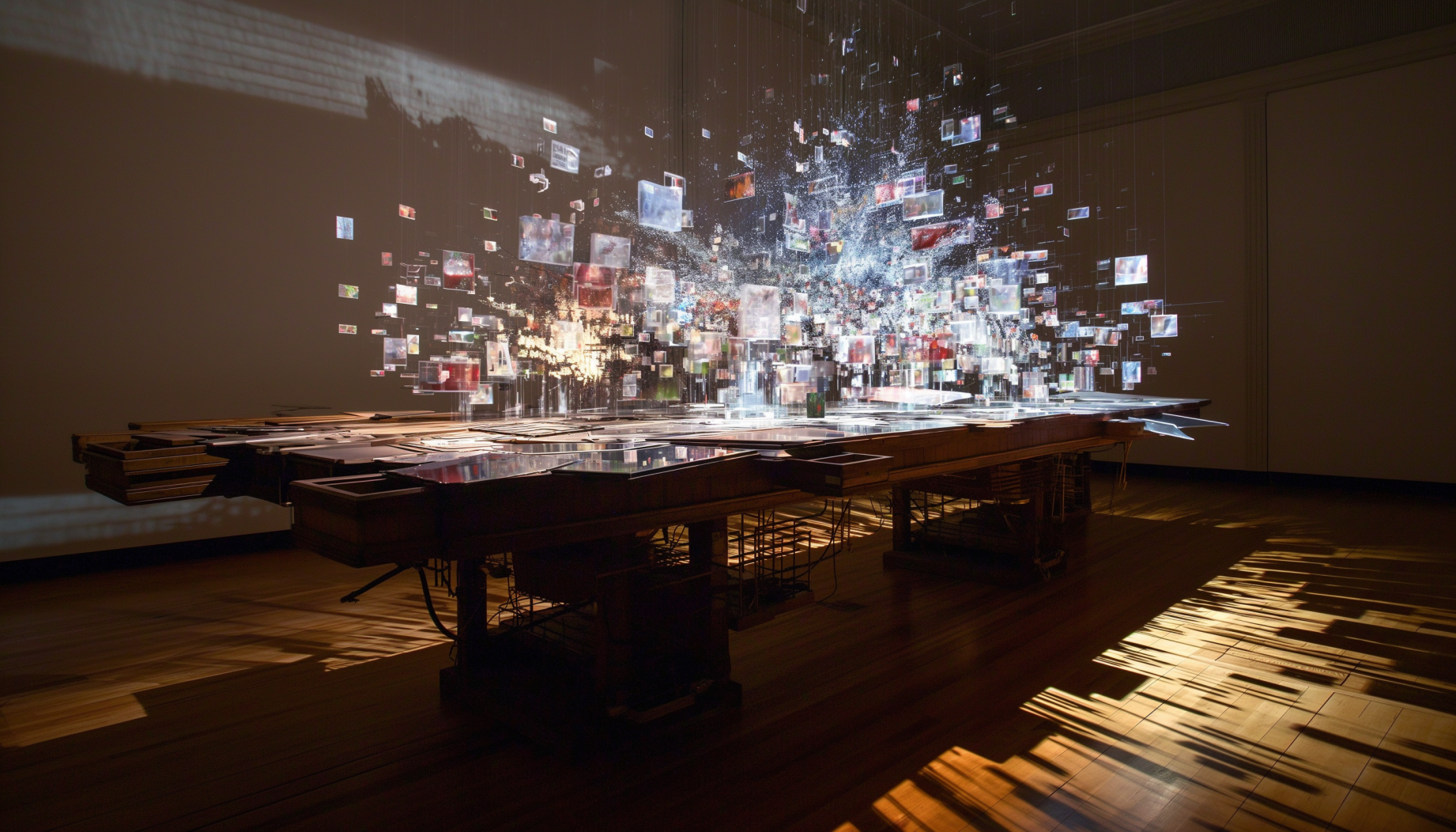
by Leonardo de Araújo, PhD
CEO & Co-founder @ fabular.ai
In the vibrant intersection of cultural heritage and technology, a transformative view of heritage interpretation is emerging, reshaping our engagement with history and art. Propelled by data-driven technologies and AI, this paradigm shift is redefining not just the mediums of interpretation but the very essence of how we interact with cultural heritage. Traditional methods of storytelling, aimed at forging emotional and meaningful connections with the past, are evolving into dynamic, interactive, and now generative experiences.
Redefining Heritage Interpretation with AI and Data-Driven Technologies
At the forefront of this evolution is the concept of ‘heritage interpretation’. This approach extends beyond static displays and didactic narratives, engaging audiences in a co-creative process that leverages algorithmic recontextualization. Digital collections transform into canvases for storytelling, with each artifact becoming a node in a complex web of narratives. The digitization of collections enables the creation of Digital Interpretive Artifacts – algorithmically-enhanced narratives that breathe new life into historical and artistic works.
While data-driven technologies in heritage interpretation profoundly maintain the core objective of interpretation – to make sense of, appreciate, and preserve our heritage – they introduce new formats and modalities. This shift is not merely about digitizing collections but reimagining how these collections can interact with audiences in a digital space.
Challenges and Concerns in the Integration of AI in Cultural Heritage
AI technologies, particularly Large Language Models like OpenAI’s GPT or Google’s Gemini, are emerging as pivotal tools in this new landscape. However, it’s still early days to fully understand how LLMs can be integrated into the field of cultural heritage effectively. A key concern, highlighted in a recent report by The Guardian, focuses on how AI tools have struggled with accurately depicting historical figures and facts, leading to misrepresentations and offending users. This incident underscores the challenges in ensuring historical accuracy and cultural sensitivity in AI-generated content [1].
The process of heritage interpretation through LLMs becomes a dialogue filled with both promise and caution. Stories are not just told but formed, reshaped, and enriched by diverse voices, including the programmed voices of Artificial Intelligence. This makes the current phase of technological integration in heritage interpretation one of experimentation and learning.
Embracing the New Paradigm of Data-Driven Storytelling in Cultural Heritage
As we delve deeper into the entanglement of heritage, data, and technology, we witness a new paradigm of heritage interpretation taking shape. Data is not just a repository of information but a medium for creative storytelling. Cultural institutions are transitioning from custodians of artifacts to facilitators of immersive, interactive narratives, acknowledging the crucial role of audiences in co-creating the cultural narrative and fostering a deeper, personal connection with our collective past.
Balancing Technology and Ethics in Heritage Interpretation
However, while AI, specifically LLMs, offers immense benefits in heritage interpretation, significant concerns about their integration remain. The accuracy and reliability of information generated by these models, particularly in the accuracy of historical facts, is a primary concern. Ethical considerations, including data privacy, are paramount. There’s also a risk of homogenization in cultural experiences as these models might reinforce prevailing narratives, potentially overlooking lesser-known or marginalized perspectives.
To address these concerns, cultural institutions must implement rigorous fact-checking protocols, update LLM training datasets for accuracy and diversity, and balance AI interactions with human-led experiences. Ensuring transparency in data usage and prioritizing visitor privacy are crucial for maintaining ethical standards.
While LLMs and data-driven technologies open new horizons in heritage interpretation, a balanced, ethical, and well-regulated approach is vital. These technologies can indeed transform the way we engage with and understand our cultural heritage, making it more accessible, interactive, and insightful for diverse audiences. However, the journey towards fully realizing this potential is ongoing, marked by both exciting possibilities and challenges that need careful navigation.
